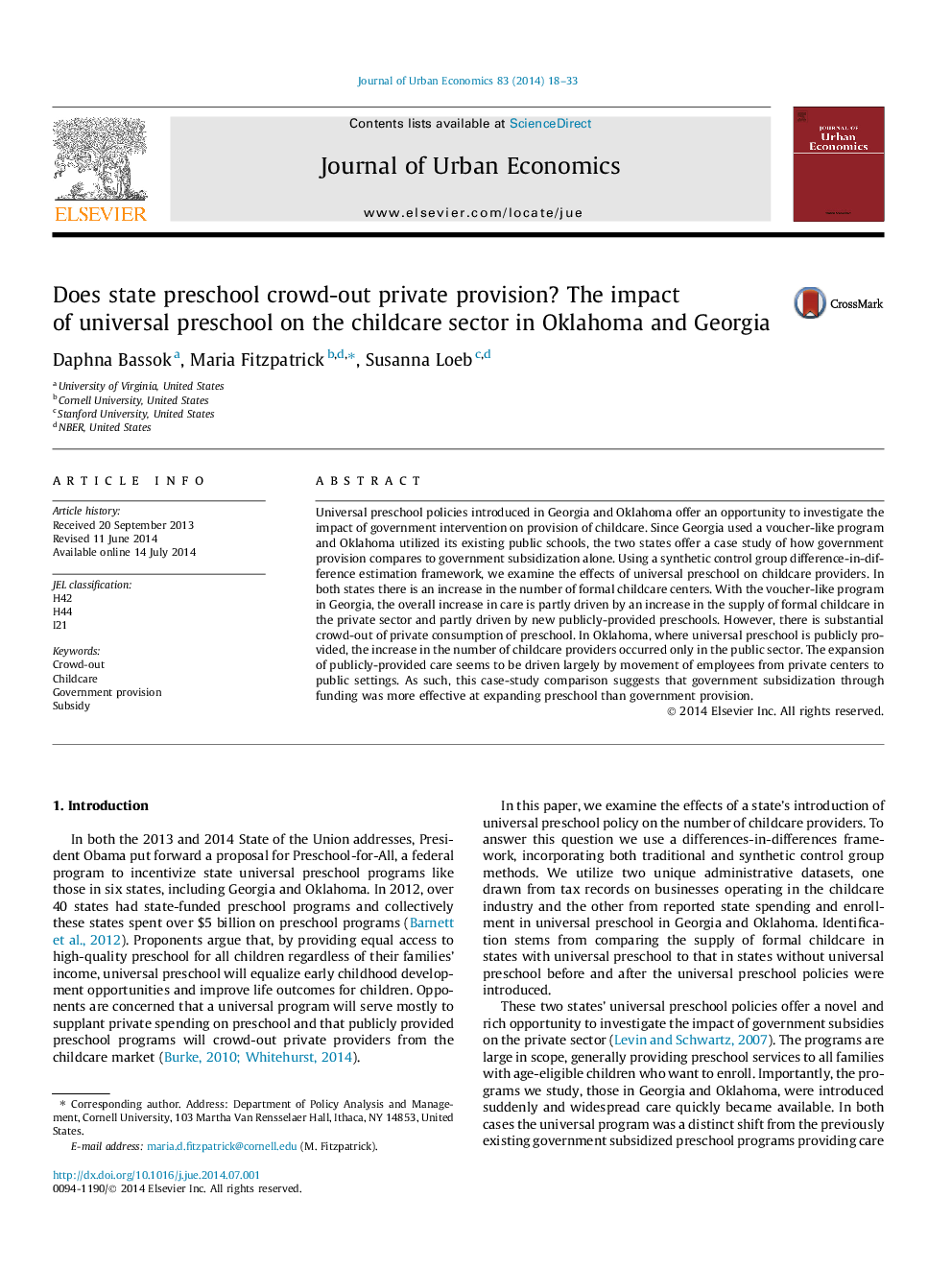| Article ID | Journal | Published Year | Pages | File Type |
|---|---|---|---|---|
| 970665 | Journal of Urban Economics | 2014 | 16 Pages |
Universal preschool policies introduced in Georgia and Oklahoma offer an opportunity to investigate the impact of government intervention on provision of childcare. Since Georgia used a voucher-like program and Oklahoma utilized its existing public schools, the two states offer a case study of how government provision compares to government subsidization alone. Using a synthetic control group difference-in-difference estimation framework, we examine the effects of universal preschool on childcare providers. In both states there is an increase in the number of formal childcare centers. With the voucher-like program in Georgia, the overall increase in care is partly driven by an increase in the supply of formal childcare in the private sector and partly driven by new publicly-provided preschools. However, there is substantial crowd-out of private consumption of preschool. In Oklahoma, where universal preschool is publicly provided, the increase in the number of childcare providers occurred only in the public sector. The expansion of publicly-provided care seems to be driven largely by movement of employees from private centers to public settings. As such, this case-study comparison suggests that government subsidization through funding was more effective at expanding preschool than government provision.
